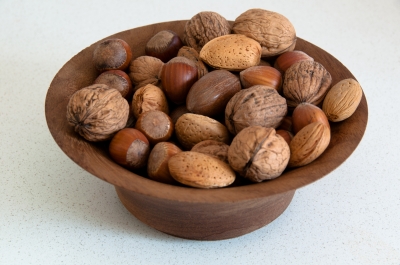Cross Reactions of Allergies

Warning: opendir(/home/pioneerthinking/public_html/wp-content/cache/db/singletables//1e5/0b5): Failed to open directory: No such file or directory in /home/pioneerthinking/public_html/wp-content/plugins/w3-total-cache/Util_File.php on line 158
Warning: opendir(/home/pioneerthinking/public_html/wp-content/cache/db/singletables//380/abf): Failed to open directory: No such file or directory in /home/pioneerthinking/public_html/wp-content/plugins/w3-total-cache/Util_File.php on line 158
Warning: opendir(/home/pioneerthinking/public_html/wp-content/cache/db/singletables//d54): Failed to open directory: No such file or directory in /home/pioneerthinking/public_html/wp-content/plugins/w3-total-cache/Util_File.php on line 158
Warning: opendir(/home/pioneerthinking/public_html/wp-content/cache/db/singletables//654/460): Failed to open directory: No such file or directory in /home/pioneerthinking/public_html/wp-content/plugins/w3-total-cache/Util_File.php on line 158
Warning: opendir(/home/pioneerthinking/public_html/wp-content/cache/db/singletables//a5c/faf): Failed to open directory: No such file or directory in /home/pioneerthinking/public_html/wp-content/plugins/w3-total-cache/Util_File.php on line 158
Warning: opendir(/home/pioneerthinking/public_html/wp-content/cache/db/singletables//b55): Failed to open directory: No such file or directory in /home/pioneerthinking/public_html/wp-content/plugins/w3-total-cache/Util_File.php on line 158
Warning: opendir(/home/pioneerthinking/public_html/wp-content/cache/db/singletables//9b9/45e): Failed to open directory: No such file or directory in /home/pioneerthinking/public_html/wp-content/plugins/w3-total-cache/Util_File.php on line 158
Warning: opendir(/home/pioneerthinking/public_html/wp-content/cache/db/singletables//a6e/e27): Failed to open directory: No such file or directory in /home/pioneerthinking/public_html/wp-content/plugins/w3-total-cache/Util_File.php on line 158
Warning: opendir(/home/pioneerthinking/public_html/wp-content/cache/db/singletables//43e/297): Failed to open directory: No such file or directory in /home/pioneerthinking/public_html/wp-content/plugins/w3-total-cache/Util_File.php on line 158
An Allergic Cross-reactions is usually an allergic response to a protein found in some foods and another food will have a similar or closely related protein. For example if you are allergic to one of the 4 different proteins found in wheat then the possibility of you being allergic to a similar protein found in Rye is increased.
Peanut Allergies or Legume Family
Some Cross Reactions Of Allergies is not very obvious such as an allergy to peanuts. Peanuts do not grow on trees and are not considered true nuts. Peanuts are part of the legume family, which include, Peas, Lima beans, Lentils and Soybeans. If you or someone you know suffers from allergies to peanuts you should be constantly on watch for other legume allergies. Other allergies may never appear but the possibility for other problem exists. Allergy testing should be completed on each of these foods separately just to be sure.
Egg Allergies
The proteins found in the egg whites usually cause allergic to eggs reaction but in rare cases some individuals have been know to be allergic to the yolks of eggs. People with allergies to eggs have a good chance of being allergic to Chicken products. As your body becomes sensitized to the eggs allergens, you may react to the ingestion of chicken products as well.
Tomato Allergies or Deadly Nightshade Family
The tomato plant is a member of the Deadly Nightshade family, which also includes the Eggplant, Tobacco, Foxglove, Peppers and Potatoes. An allergy to tomato is rare and the worst parts of the plant for causing an allergic reaction seem to be the seeds, skin and juice. Some patients can ingest process tomato products such as tomato paste with little or not reaction, and yet, develop severe symptoms with fresh tomatoes.
Wheat Allergies or Grain Family
Except for specific groups, being allergic to wheat is considered relatively uncommon. Up to 30 percent of people in the baking industry is believed to have developed occupation asthma because of allergies or intolerance to wheat and flower. Cross-reactions to wheat are members of the grain family and include Barley, Millet, Oats, Rice, and Rye.
Milk or Dairy Family
Lactose intolerance involves the digestive system instead of the immune system. The digestive system in lactose intolerant individuals does not produce enough of the enzyme needed to break down the sugar found in milk thus producing symptoms similar to an allergic attack. Cross-reactions to Milk include Butter, Cheese, Cream, and Yogurt.
Seafood
If you are allergic to something in the vertebrates group then it is 50 to 75 percent that you will be allergic to one of the other vertebrates. The same holds true for the rest of the groups. Complete avoidance to one or more groups of seafood is often recommended. However, just because you are allergic to one of the vertebrates does not mean that you will be allergic to something in the shellfish group.
Types of seafood groups are, Vertebrates like Anchovies, Cod, Herring, Mackerel, Salmon, and Tuna. Crustaceans like Crab, Lobster, Prawns, and Shrimp. Shellfish like Clams, Mussels, Oysters, and Scallops. Cephalopods like Calamari, Cuttlefish, Octopus, and Squid. Gastropods like Garden Slugs, Sea Slugs, and Snails.
Nuts or Tree Nuts
Cross-Reaction to Nuts include Almond, Brazil, Hazelnut, and Walnut.
No mater what type of allergy you are suffering from their is a good chance that you can find relief from it. You can fight allergies with vitamins and over the counter products. Common Vitamins and over the counter products can help with Allergies such as Vitamin A, Vitamin B, Vitamin C, Vitamin E, Pantothenic Acid, Glucosamine, Antioxidants, Allergy Aid, and Quercitin.
Vitamin A is a known antioxidant and can assist the human body in the healing process. Vitamin A is stored in the liver and fat cells of the human body and can reach toxic levels. DO NOT take more than the recommended dosage of Vitamin A.
Up to one-third of older people can no longer absorb Vitamin B from their food. Vitamin B is needed to form red blood cells and keep nerves healthy.
Vitamin C is nature’s protective nutrient, essential for defending the body against pollution and infection and enhances the bodies immune system.
Beta Carotene protects the mucus membranes of the mouth, nose, throat and lungs. It also helps protect Vitamin C from oxidation, which enables it to perform at optimum efficiency.
Vitamin E protects the lung tissue from inhaled pollutants and aids in the functioning of the immune system.
Many find Pantothenic Acid to be very helpful against allergy symptoms. It is another form of nontoxic B vitamins. Pantothenic Acid is critical in the metabolism and synthesis of carbohydrates, proteins and fats.
Glucosamine is an anti-inflammatory and may give some relief from allergy symptoms.
Substances called antioxidants can neutralize free radical by pairing up or binding with the free radical elections thus inhibiting them from damaging cells in the human body.
Allergy Aid supplies 9 beneficial Herb’s to help provide temporary relief of respiratory allergies. The natural action of these specific Herb’s help to open bronchial tubes and ease breathing.
Quercitin is a well known flavonoid. Flavonoids are powerful antioxidants and can reduce inflammation boost the immune system and strengthen blood vessels and improve circulation. Quercitin is also known for its ability to block the release of histamines, thus reducing or preventing allergy symptoms.
If you are Allergic to anything then find a good health care professional prior to starting any type of home treatment.
Always consult your doctor before using this information. This Article is nutritional in nature and is not to be construed as medical advice.
The Author:
David Cowley has created numerous articles on allergies.
Photo. Franky242








